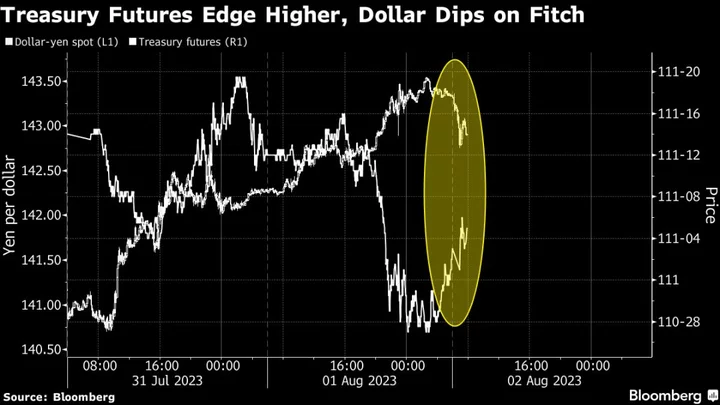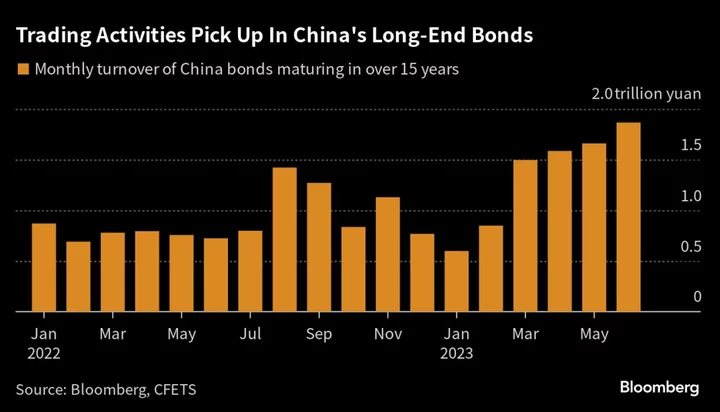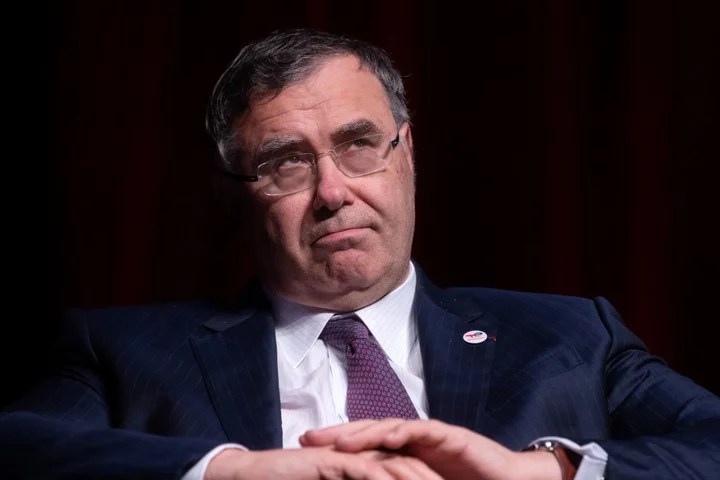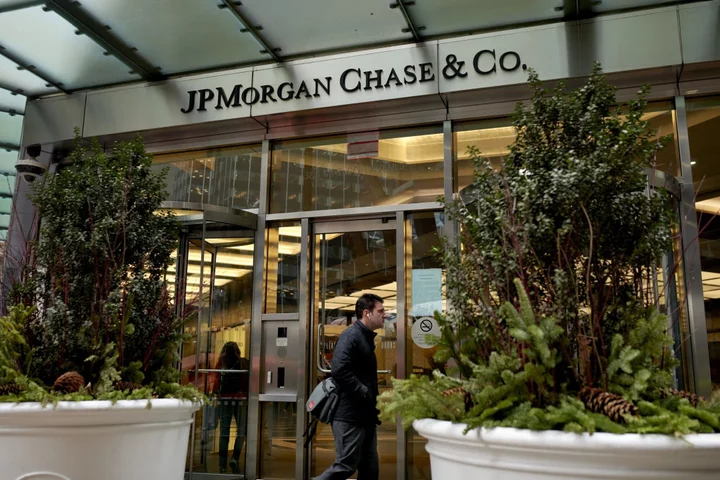US Treasuries drifted higher after Fitch Ratings stripped the US of its top-tier sovereign rating, spurring modest demand for haven assets which counter-intuitively include debt issued by the world’s biggest economy.
Yields on two-year Treasuries fell as much as three basis points to 4.87% in early Asia trading, while those on 10-year US bonds slipped as much as two basis points before paring. Fitch cut the US from AAA, a ranking the nation has held at the ratings company since at least 1994.
The decision comes after Fitch warned that repeated partisan political clashes over the nation’s borrowing has eroded confidence, while the budget deficit swelled. While the downgrade may lead to short-term market volatility, investors say it has little impact on the allure of top-notch US assets given a lack of alternatives and the economy’s solid growth.
“Treasuries still provide the broad risk off hedge during periods of stress, which ironically, the downgrade may morph into,” said Marvin Loh, global macro strategist at State Street Corp. “When we look at 2011, credit and stocks initially were the most volatile following the S&P downgrade.”
S&P Global Ratings was the last major credit ratings agency to downgrade the US after removing its top score in 2011 on the heels of an earlier debt-ceiling crisis. Back then, it triggered a selloff in risk assets like global equities, but ironically boosted Treasuries as investors sought out havens.
Yields on 10-year Treasuries fell 24 basis points on Aug. 8 in 2011, one trading day after S&P lowered the US’ credit rating.
Stocks in Asia fell on Wednesday.
“The Treasury market was highly volatile in the wake of S&P’s downgrade in 2011, but we would argue the underpinnings of the US economy were very different then, and we do not expect similar volatility in coming weeks,” wrote JPMorgan Chase & Co. strategists including Jay Barry in a note after the Fitch move.
Some commentators including Larry Summers and Mohamed El-Erian have criticized Fitch’s decision given the US economic resilience. Summers, a former Treasury Secretary, said while there were reasons for concern about the long-run US deficit trajectory, the ability to service its debts isn’t in doubt.
Yields on 30-year US debt climbed eight basis on Tuesday and held at 4.09% in Asia Wednesday, around the highest level since November. Yields remain elevated as investors mull the Treasury Department’s plans to ramp up issuance of longer-dated bonds to fund a widening budget deficit.
What Bloomberg Strategists Say...
“There shouldn’t be much lasting impact on Treasuries as Fitch put the US onto a stable outlook from negative. That means another move is very unlikely — its a one-and-done operation and marking to market with S&P’s AA+ rating.”
Mark Cranfield, Markets Live strategist
While some parts of the US curve face selling pressure, the consensus is that demand for Treasuries will persist as investors struggle to find other safe and liquid options to park their cash.
Such rating cuts “are a bit like these debt ceiling debacles — they can cause a bit of short term angst, but never amounts to anything much,” said Amy Xie Patrick, money manager in at Pendal Group. There needs to be a “credible alternative in terms of both being safe enough and large enough” to displace Treasuries, and there’s no clear options now, she said.
James Wilson, senior portfolio manager at Jamieson Coote Bonds in Melbourne, agrees.
“Ten-year Treasuries have popped up above 4%, which has been a line in the sand for investors over the last year,” he said. “I would expect this demand to continue.”
--With assistance from Michael G. Wilson.









